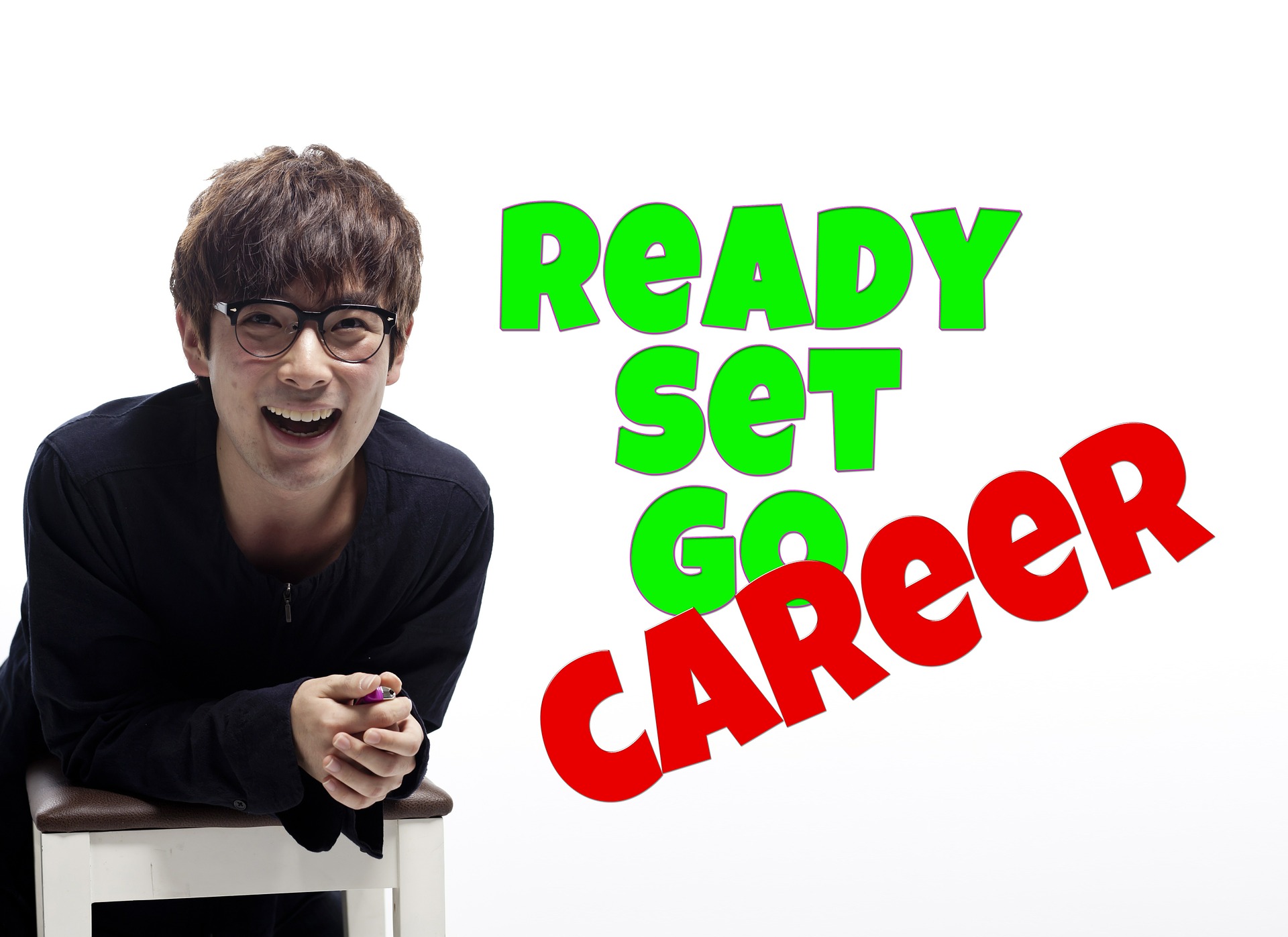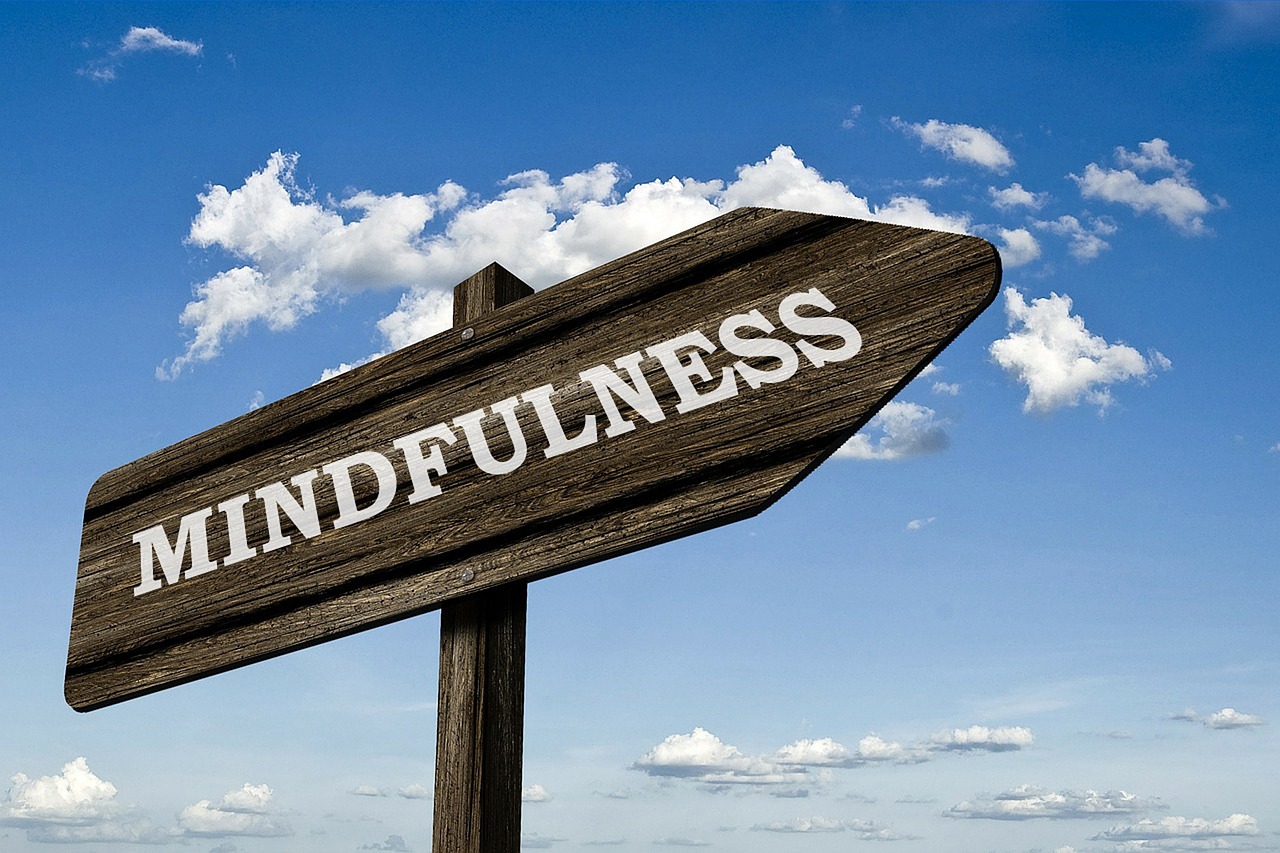Bay College - FYE 103 - Career Exploration
FYE 103 Career Exploration
Instructed by Denise Dufek
Designed by the Bay College Online Learning Department and Bay College Library
2nd Edition
Unit 1
Unit 1 Objectives
- Identify your top 7 Values.
- List and describe Carl Jung’s three criteria into which all people can be classified.
- List and describe the differences and similarities of the six theoretical personality types described by John Holland.
- List and describe your VIA Character Strengths.
- Research the classifications of
work environments relating to
Holland’s personality types to obtain
job categories of interest.
1.1 Introduction Career Exploration

This image shows a rustic welcome sign nailed to a post in a flower garden.
Welcome! I am very excited to have this opportunity
to work with each and every one of you in this new
course: FYE 103 Career Exploration. This course is
divided into three units. We will spend approximately
2 weeks on each unit. Unit 1, “Getting Started” is all
about you.
If you do not know yourself, how can you possibly know what you want to do for a career? In this unit you will be taking some personality assessments so that you may better understand yourself and thus make more informed choices when it comes to researching your career options in Unit 2- Creating a Game Plan. These assessments will help pinpoint your personality preferences, workplace strengths and direct you toward professions that best compliment your unique personality. You will also identify you values, underlying needs and motivations in a classroom activity.
Does the career you are thinking about really satisfy your personal values? If you find yourself in a career that is not in alignment with your personal values, your integrity will become compromised and you will not be an engaged employee. The Value Tag activity will help ensure that your career path is in “sync” with your underlying values system. Lastly, you will be required to write a self-reflection paper combining your assessment findings and thoughts with all of the information you have learned about yourself. Please check your syllabus for all of the important details of this and all other assignments.
Note: The Value Tag activity and the VIA Character Inventory are not mentioned in the Saylor video. I have added these two assessments to enhance your learning experience.
1.2 Getting Started

This image shows three construction workers in silhouette against the rising sun.
While none of us know what our future holds, some
of us take proactive steps to explore possibilities and
opportunities open to us. Congratulations! You are
beginning an exciting journey to turn daydreams into
reality! In order to use your time productively, you
will need to learn more about yourself, your interests
and personality, and how these factors relate to various
types of jobs or careers. This unit offers resources to
address this self-knowledge. For example, The Saylor
Foundation’s introductory video reminds you why the
initial step in your journey needs to be self-assessment.
Secondly, you will have an opportunity to take Jung’s
Typology Assessment to assess your personality type.
You will also identify your top 7 Values in a classroom
activity and identify your Character Strengths through
taking the VIA Character Strengths Inventory. Finally,
John Holland’s quiz will help you to understand
how your personality type is compatible with various
work environments. By learning more about yourself,
you are ensuring that your job search strategy is appropriate
to your interests and strengths. Enjoy your
self-exploration!!
Viewing this video and note-taking should take less
than 2 hours to complete.
Watch this video online at: https://www.youtube.com/watch?v=M0Ssz93oyrk
Video Transcript
[MUSIC PLAYING] Welcome to the first unit of saylor.org’s job search skills, unit one. This initial video is Saylor’s way of saying hi and letting you know that we applaud and encourage your decision to make positive changes in your life.
This course is the first in a series of four courses under the job search umbrella. These courses will present a variety of topics that will help you in preparing for and landing a job for yourself, including resume writing, interviewing skills, and professional etiquette.
This job search skills course will begin by introducing you to some self-assessment tools that will help you determine your personality type and the work environments that are compatible with your type. In unit two, you will explore resources to help you create a game plan for your job search. Finally, but equally as important, unit three brings you to online sites to learn how to recognize and manage your stress during this time of change.
In this unit, our getting started unit, you will learn that you need to explore your values, interests, and abilities before you design an effective job search plan. For example, by taking the Jung Typology Test, you’ll learn more about your personality type, your lifestyle in general, and your style relating to areas such as business, love, education, communications, and conflicts.
You’ll continue to learn more about your personality type, as well as the work environments that are compatible with your type, by taking John Holland’s quiz. This information will help you to make productive and effective career decisions. As is the case with all units in this course, each resource in unit one contains links to allow you to pursue more in-depth information on any items of interest.
In order to provide sufficient information and avenues to learn about yourself and which type of jobs or careers may be best for you, we have necessarily explored only the tip of the iceberg. Please feel free to follow any embedded links in these readings to obtain more detailed information on a given subject. We hope you enjoy taking the journey through the process of self-assessment, creating a successful job search strategy, and learning how to maintain a healthy, stress-free mind throughout the process. I’ll see you again at the outset of unit two. [MUSIC PLAYING]
Content by Mary Matera Creative Commons Attribution 3.0 License Career
1.3 Lecture Notes
As I stated earlier in the introduction to this unit, it is important to understand that a career is not about having a job and a pay check. Both are good things to have but how meaningful will your life be if you do not have any vested interest in your work? How good do you think you will be at a job that you do not love? My personal coach, Bill Johnson- The Dream Dean, has created a powerful diagram that illustrates this point beautifully. Please take a few moments to reflect on the notion of Meaningful Work. My hope is that you will use this course as an opportunity to discover more about yourself and begin your journey toward your life goals and meaningful work.
1.4 Assignments

This image shows an open book against an orange background.
Each unit is laid out in consecutive order. Start at the top and proceed through each piece. If you skip parts, you
will miss valuable information and not do well in this course.
Important If you are a new student and have not taken and passed an on-line course at Bay College. Please take the On-Line Tutorial. Completing this tutorial will ease your navigation in this course and will take about an hour to complete. Print every assignment that you take and keep it in a three ring binder. This is your final project for this course.
- Read my Introductory remarks (1.1)
- Print 21st Century Workplace Readiness Skill handout and put it in your three ring binder.
- Read the Saylor commentary and watch the 2 minute video (1.2)
- Read the lecture notes and reflect on the Meaningful work diagram. We will discuss this in class so be sure to take the time to process what it means to you. Take notes about what the diagram means to you so that you will be prepared for class discussion. (1.3)
- Take the Jung Typology Test and Career Indicator(1.5)
- Take the VIA Character Strengths Assessment (1.6) • Take Holland’s Career Quiz (1.7)
- Write your Personal Reflection paper and submit in Blackboard. Refer to your syllabus for details.
- Read the summary before exiting the unit. (1.9)
1.5 Learning About Ourselves

This image shows a man taking a photo of himself using a Nikon camera.
Instructions
Click the following link: https://www.16personalities.com/free-personality-test to take the “16 Personalities Personality Career test.” As mentioned on the website above, “This may help you identify your life style in general as well as your style in areas such as business, love, education, communications, and conflicts.” Read the descriptions of the personality types, and then click on the “16 Personalities Personality Test” to take the test. The test consists of 72 “Yes” or “No” questions, and you will receive your score immediately.
This resource should take you approximately 15 minutes to complete.
1.1A - 21st Century Workplace Readiness Skills
Click the following link: http://cteresource.org/attachments/atb/WRSRepositoryFiles/WRSList.pdf to print the list of workplace readiness skills and place it in your binder for reference and class discussion. Refer to this sheet often and check to see how well you practice these skills.
1.6 VIA Character Strengths

A woman with extended arms is holding a burning sparkler.
The numbers continue to grow and show that the VIA Institute on Character (http://www.viacharacter.org/www/
Contribute) is empowering people around the world to discover what connects and is best in us: CHARACTER
STRENGTHS. As a non-profit, positive psychology (http://www.viacharacter.org/www/Positive-Psychology)
organization and the home of the world’s largest database on character (http://www.viacharacter.org/Survey/Account/Register)
and character strengths (http://www.viacharacter.org/www/Character-Strengths), our mission is
to unleash the strengths within all of us to build a better world. We are proud to offer the only free, online, scientifically
validated survey of character strengths.
1.7 Linking Our Personality to Career Paths

A boy is standing on a forest path, with sun streaming through the trees.
Instructions
Go to http://www.roguecc.edu/Counseling/HollandCodes/ to take John Holland’s quiz to learn about your personality type as it relates to compatible work environments. Each of the six work environments (investigative, artistic, conventional, enterprising, social, and realistic) lists types of jobs associated with that category. Begin by clicking on “People” to view a brief description of each of the six personality types. Return to the Holland Codes and Career Decisions site, and click on “Work Environments” to view the requirements, values or personal styles, etc. associated with each of the six environments. Finally, click on “Take the Quiz.” When you have completed taking the quiz, click “submit” to “get your personal Holland Code and determine what career path(s) work best for you.”
The resource should take approximately 15 minutes to complete.
1.8 Personal Reflection Paper Personal Reflection Paper
After completing Unit 1 you are required to write a self-reflection paper. This assignment is designed to help you reflect on your life experiences and the results of your personal assessments. Address the following reflection questions in your paper:
- What are your top 7 values?
- What is your personality profile code? Please discuss any insights that you have gleaned about yourself from taking this personality profile? (Example: If you are an introvert, have you ever wondered why you get exhausted when you are around a lot of people?
- Do you think the Personality Profile Code is valid / or useful? Why?
- What are your VIA Character Strengths? Remember, Character Strengths focus on your morals, behaviors, and values. They answer the question, “What is best about who you are?”
- What is your Holland Code? (Holland made his life work to connect people with their ideal work environments based on interest preferences.) Do the type/work environments of Realistic, Investigative, Artistic, Social, Enterprising or Conventional fit you?
- Review your Meaningful Work Diagram and discuss how the elements of this diagram fit into your life as a college student, and career seeker.
This paper should not be a simple list of answers to these questions. It should be well considered, with your responses and impressions woven into a flowing integrated essay. In other words, pull this information together and paint me a picture (with words) of who you are. (This paper should be approximately 500 words.)
1.9 Summary
Now that you have completed Unit 1, we will revisit the Unit objectives before moving on to Unit 2:
- Identify your top 7 Values
- List and describe Carl Jung”s three criteria into which all people can be classified
- List and describe differences and similarities of the six theoretical personality types described by John Holland
- List and describe your VIA Character Strengths
- Research the classifications of work environments relating to Holland’s personality types to obtain Job Categories of interest
Unit 2
Unit 2 Objectives
Each of these is an important piece of the puzzle of you! While self-discovery can take a life-time, you now have information that perhaps you did not have before. Some of the results may change slightly over time depending on experiences and life circumstances. The key here is “knowing thyself”. You have a great start. I hope you have enjoyed learning more about yourself.
- Locate a Career One Stop near you.
- List many services offered by the student’s local Career One Stop.
- Research and obtain information about specific jobs in the your preferred occupational groups including wages, number of jobs available, required entry level education, on-the-job training availability, and 10-year projected growth rate.
- Create a list of questions to ask about potential employers, and identify resources available to obtain information about them.
- Identify necessary information to include in a job search plan.
2.1 Introduction

An orange street sign reading "Career Get Started Now"
This unit is the second part of your career exploration journey. You will need to be very diligent about staying on task as there is a lot of material for you to research. I will review the parts of this unit with you in class and we will begin working with each of the links right away. Ultimately, you will be the one doing most of the work in this unit. I suggest that once you begin, start at the top and work your way systematically through each part of the unit. Each part of this unit contains significant information to help you get one step closer to creating your career plan. Stay focused! The information that you collect will be added to your Portfolio Summary Pages. Please refer to your syllabus for more details.
2.2 Lecture Notes

A smiling man with glasses is leaning over a stool next to the words "Ready Set Go Career"
Are you ready to begin?
This unit will require a great deal of online research and self discipline.
Each part of this unit helps you create your career exploration profile. Please take your time and complete the quick assessments, they are linked to some great career information. If you are saying “really, another assessment?” The answer is YES! Parts of these assessments are linked to important pieces and the only way to get there is through the assessment. The path to relevant information for each of you is based on the results of your unique responses. We are not done learning about ourselves yet! I promise, you will find great information about great careers that are waiting just for you. Be sure to print your top 3 career choices so that you may include them in your portfolio.
2.3 Assignments

An open book against an orange background.
Once again, start at the top of the unit and work your way through each of the parts.
- Read the Introduction (2.1)
- Read the Lecture notes (2.2)
- Read the printed commentary and watch the Saylor video in (2.4)
- Review the link in 2.5 please note, this portion of the site is for people who have lost their job and are starting over
- Browse the Occupational Outlook Handbook (2.6) you will want to come back to this link
- Move to 2.7 Create a Job Search Plan, click on Take Assessments, click on O*Net Interest Profiler, then move up to the upper right corner
- O*NET Sites, click on My Next Move, click on Tell Us What You Like to Do (Start) complete each part of the interest profiler. Print your pages for your Portfolio.
- Pick 3 of the recommended careers that speak to you and dive deeper into your research.
- If you did not get this PDF in class, please print it and use it as a guide to help you navigate this unit
- Informational Interview Questions: Under the heading “Explore Career Options,” click on the link for “Research Potential Employers.” This section includes key questions to ask about employers and offers potential resources to obtain answers to these questions. Print these and add 5 questions of your own for a potential employer
- Once you pick your top 3 careers, go to 2.8 and view your top 3 careers in Dr. Kit’s Success at Work Videos TEN_26_12_Att.pdf Print this if you do not have it. You will use this guide (What’s My Next Move) for the three Profile Pages that are required for your Portfolio Project.
2.4 Creating a Gameplan

A man using a surveying scope
Now that you have a better idea of your personality type and the kinds of jobs or careers that might be a good fit for you, you are ready to begin your job search in earnest! This unit offers resources to apply your self-knowledge to formulate a “game plan” that includes using cost free resources such as the United States Department of Labor, One Stop Career Centers, and the United States Department of Labor: Bureau of Statistics’ Occupational Outlook Handbook. We invite you to view Saylor Foundation’s introductory video, “Creating a Game Plan” to learn more about important concepts contained in this unit.
Viewing this video and note-taking should take less than 15 minutes to complete.
Watch video online at: https://www.youtube.com/watch?v=OwtUwJ-uWCg Unit 2
Video transcript
[MUSIC PLAYING] Welcome to Unit Two of saylor.org’s Job Search Skills course, and thanks for being here.
In Unit One of this course, you completed personality self-assessments to learn how to begin to make career decisions based on your unique style, strengths, and abilities. Moreover, you’ve discovered how to research types of jobs and careers that are compatible with your interests and values.
The next step in your job search journey is to use the insight you have obtained through self-assessment to focus your efforts on effective research and activities. For example, in this unit you’ll find resources that will help you explore the job search support that is available to you. In addition, you will learn how to research current information regarding today’s job market, and how to identify appropriate employers in your local labor market.
Well, you’ve probably heard of the Department of Labor. You may not know that this government department has partnered with local agencies to provide an array of job seeker services. These sites are called one-stop career centers and offer zero cost services related to virtually all aspects of job search. You can access the link provided in Subunit 2.2 to learn more about a one-stop career center that is near you.
One of the most comprehensive resources available to job seekers is the US Department of Labor Bureau of Labor Statistics Occupational Outlook Handbook. This site provides in-depth information about occupations, including the range of pay for a particular job, the level of training and experience required to enter that field, whether or not there is on the job training, and the projected median pay for that type of job throughout the decade.
This unit also includes learning resources that will help you create your own personal job search plan. For example, CareerOneStop offers information on how to research potential employers of interest to you, including key questions to ask these employers and where do obtain answers to your questions. This unit will assist you in formulating an organized plan of action so that you aren’t embarking on this job search journey without a road map. While there are many online resources available to you that can guide you throughout your job search, we have selected several value-packed sites to ensure that your finite budget of time, money, and energy are optimized and result in a successful endeavor.
Keep up the good work, and I’ll see you back here at the beginning of Unit Three. [MUSIC PLAYING]
Content by Mary Matera Creative Commons Attribution 3.0 License
2.5 Worker Re-employment

A soldier in a hardhat works on a construction site
Instructions
Go to http://www.careeronestop.org/ReEmployment/ to view CareerOneStop’s wealth of information regarding services available from the United States Department of Labor and their partners. One Stop Career Centers, as they are known, offer an array of job seeker services including: job search workshops, career counseling, labor market information, skills assessment, computers, fax, copier, and internet access. In addition, veterans’ reps, employment reps, phones, free internet, and resume writer access computers are on site. Representatives are available by appointment. To learn more about a One Stop Career Center near you, under “Local Help, Find a One Stop Career Center” on the left of the page, simply enter your zip code or city and state and click “go.”
You should dedicate approximately 15 minutes to exploring this resource.
2.6 Occupational Outlook

A man wearing Ray Ban sunglasses is looking into the distance. Binary code is superimposed over the image.
Instructions
Explore Bureau of Labor Statistics’ “Occupational Outlook Handbook” at http://www.bls.gov/ooh/ to read the homepage of this site. Note that there are several ways to learn about occupations on this website, the range of pay for your given experience and education, the projected growth rate of a particular job and whether there is onthe-job training for the job you are researching. You might want to begin your search by selecting an “occupation group” on the left of the page to learn about jobs within that category, the level of education required to enter that field, and the projected median pay for that type of job.
This resource should take approximately 15 minutes to complete.
2.7 Create a Job Search Plan

A young man is sitting on a couch and writing on a notepad.
Instructions
Go to http://www.careeronestop.org/JobSearch/Plan/ create-a-job-search-plan.aspx?&frd=true to explore CareerOneStop’s wealth of information regarding guidance as to what factors to consider when pursuing your next job or career opportunity. For example, rather than jumping right in and “grabbing the help-wanted section or surfing the web” in a “scattershot” mode, the authors suggest that you create a weekly plan of activities and schedule these activities weekly or daily much as you would any budget for limited resources (money, time, energy, etc.). Under the heading “Explore Career Options,” click on the link for “Research Potential Employers.” This section includes key questions to ask about employers and offers potential resources to obtain answers to these questions. Once on this new web page, under the heading “Identify Companies,” click on “Employer Locater” to “identify and get contact information for potential employers of interest to you in your local area.”
Exploring this resource should take approximately 15 minutes to complete.
2.8 Dr. Kit’s “Success at Work” Videos

A man is sitting on a couch and taking notes while watching something on his computer.
Go to http://www.drkit.org/careervideos/ to view informative videos on various careers, explore Dr. Kit’s “Success at Work” videos. Select a career that might be of interest to you to learn about a typical day for that employee, the qualifications required for the job, the employee’s description of their best and worst parts of the job, as well as additional helpful advice from the employee’s perspective. This video offers you an opportunity to explore many different types of jobs and to compare them to your personal interests.
Viewing the video and taking notes should take less than 15 minutes to complete.
2.9 Summary
You have reached the end of this unit. Let’s review the Unit objectives:
- Locate a Career One Stop Near you
- List services offered by your local Career One Stop
- Research and obtain information about specific jobs in your preferred occupations, groups including wages, number of jobs available, required entry level education, and on-the-job-training
- Create a list of questions to ask about potential employers, and identify resources available to obtain information about them
- Identify necessary information to include in a job search plan
If you have followed each step in this Unit, you have achieved these outcomes. Are you looking for the Unit test? Completing each step in this unit proves you are committed to this work. Your portfolio will serve as evidence of you having done the work! Well done! There is no test for this unit.
Unit 3
Unit 3 Objectives
- List various life events that psychiatrists Holmes and Rahe contend contribute to risk of illness.
- Create a Stress Diary to track various stressors in the student’s life.
- List the positive outcomes resulting from being a “positive thinker” and the negative outcomes from being a “negative thinker.”
- Identify how Mindfulness and Reframing can help allievate stress.
- Discover a tool you will use to help you manage stress.
3.1 Introduction

A stack of 4 oval shaped rocks along side a small spherical rock is set against the background of a sunset.
If you have not learned anything about stress (except that you have it) now is as good a time as any to start. In this unit we will begin to identify daily stressors, how over prolonged exposure, the immune system becomes compromised and we become more vulnerable to illness. We will also discuss how we can choose to change our thinking to create more positive outcomes. Lastly we will practice mindfulness and discover how simply powerful it can be.
3.2 Assignments

An open book in front of an orange background.
- Read 3.1 the Introduction to this unit
- Read 3.3 Lecture Notes
- Read 3.4 Stress Management and watch the Saylor video that gives an overview of this unit.
- 3.5 Take the Assessment and score your Stress Levels, click on the links in Mind Tools that are related to your particular stressors. Print 2 pages of recommendations for your personal stressors and place them in your Portfolio.
- 3.6 is the Mind Tools Stress Diary, click on the link and read about daily stressors. Fill out your diary if you have not completed it already and place it in your portfolio.
- 3.7 Take this Assessment about Positive/Negative thinking- remember to print it and place it in your Portfolio. If you do not like your results, what do you plan to do to change your thinking?
- 3.8 read the Unit Summary and organize your Portfolio for your Final Presentation.
3.3 Lecture Notes

A wooden sign pointing to the right with the word "mindfulness" written in white. This is set against a background of a blue sky filled with clouds.
This unit is focused on helping you identify and understand your stress responses. If stressful situations persist and there are no healthy coping mechanisms developed. The immune system is compromised and disease begins. There are many tools that are available to help us learn healthy ways of dealing with the daily ups and downs. This unit will help you explore some very solid, research based tools for dealing with stress.
Two of the most powerful tools I use most frequently for managing stress are both simple and free. Both are cultivated through practice. The first tool I use is re-framing. Re-framing is a matter of mindset. Even though something happens that I had not planned for, I still have a choice in how I respond to it. I can let “it” ruin my day, or I can figure out how to best deal with the situation and move on. So in other words, I can choose to “awfulize” the situation, and make myself and those around me have a no good, very bad day, or I can find a solution to take myself out of the situation. I always have a choice. Victor Frankel survived the most heinous Nazi concentration camp by using the power of re-framing to survive the ordeal. Everything, including his clothing and his dignity was stripped away, and yet he choose to steadfastly cling to the one thing that could not be taken from him- his attitude. He said: “Each situation has a good side and a bad side. Each moment you decide. In section 3.7 you will identify if you are a positive or negative thinker and experience the power of powerful thinking, in a way that is much like re-framing. Please take this information to heart. If you are a negative thinker, use this opportunity to begin to become consciously aware of your thought/perception patterns. Once you become more aware, you can make changes that will help you manage your thought process, thus changing your intentions, attitudes and outcomes to a more positive lifestyle.
Choosing to be mindful is about awareness. By this I mean really aware of everything going on around you! Mindfulness can be thought of as a moment-to-moment, non judgmental awareness, cultivated by paying attention in a specific way that is, in the present moment, and as non-reactively, as non-judgmentally, and as open heartedly as possible. (Jon Kabat-Zinn) Rather than allowing ourselves to be distracted by technology, television, or a myriad of other things, we slow down and take in everything being fully present. Many of those who practice mindfulness call the constant ricocheting of our attention monkey mind. I find it amusing that many people to call it multi-tasking. Let’s stop fooling ourselves, we cannot multi task, only shift our attention from one thing to another and not give either task the focus and attention it deserves to get it done well. I hope you enjoy this unit and develop some new skills for dealing with stress.
3.4 Stress Management

A woman in white is sitting among trees and shrubbery while meditating.
The third and final unit in this course is entitled, “Stress Management.” The research in the field of stress tells us that unhealthy levels of stress may be the single biggest factor in sabotaging our otherwise well-formulated job search plan. You have progressed through the steps of self-assessment and have explored various resources that offer relevant information about your potential job or career. Hopefully, you are experiencing a level of excitement about your future. Change, however, brings feelings of uncertainty and risk. You will learn in this unit that while it is not possible to simply banish these thoughts from your mind, you can take steps to recognize specific stressors in your life and learn how to “manage” or cope with this stress. Please begin by viewing the Saylor Foundation’s brief video, “Recognizing and Managing Stress.”
Instructions: This 3-minute video addresses wellness and introduces concepts contained in Unit 3 relating to the need for stress management in our lives. For example, you will learn how to recognize your long-term and shortterm stressors and that you have the power to choose to frame challenges you face throughout your job search as insurmountable obstacles or potential opportunities.
Viewing this video and note-taking should take less than 15 minutes to complete.
Watch video online at: https://www.youtube.com/watch?v=yEq4FUqRmT4
Video Transcript
[MUSIC PLAYING] Welcome to the final unit of saylor.org’s Job Search Skills course. You may have enrolled in this course for many reasons. Maybe you were laid off from your job or are looking for your very first job, or perhaps you are ready to take that next step up the career ladder or even desire to change careers completely.
Whatever your reason for embarking on a job search, you are probably-- and very understandably-- experiencing a high level of stress. Although it may seem that you are becoming overwhelmed with negative thoughts, unproductive behaviors, and uncontrollable emotions, you will learn in this unit that stress can be managed and that you are just the one to do it.
The first step in learning to manage our stress is to identify the specific causes. Do they relate to long-term stressors, or are short-term stressors getting the best of you? Once we can put a label on our source of stress, we can begin to learn and apply coping skills that will put us once again in the driver’s seat.
One way of identifying and measuring our long-term stress is by taking the Holmes and Rahe Stress Scale Test. This test rates various life change events and estimates our risk of becoming ill in the very near future. To help us analyze and manage short-term stress-- dealing with difficult people, poor time management, burnout, et cetera-- we should begin to keep a stress diary. By keeping this diary we can look for patterns of ineffective reactions to stress and concentrate on applying appropriate coping skills. This unit will provide you with a stress diary template that you may find helpful throughout your job search.
This unit will also ask you, are you a positive or negative thinker? You will learn how positive and negative thinking can become self-fulfilling prophecies and can greatly impact the level of success we achieve in our job search efforts.
It is interesting to note that when given identical problems, the negative thinker only concentrates on the obstacles that will prevent successful resolution. The positive thinker, conversely, frames the problem is such a way that he or she concentrates on the positive side, or the opportunities presented by the challenge.
So while we cannot avoid stress completely, nor should we want to, it is important to recognize stress for what it is and to develop a plan to cope with stressors. A positive attitude will go a long way toward helping us adapt to the stressor.
Of course, some things are simply out of our control. We must learn to accept these challenges for what they are, and to not let them deter us from our mission. However, if we suspect that ineffective time management is causing us stress, it is important to organize our daily schedule to include some fun and relaxation during this time of change. We wish you the best of luck. [MUSIC PLAYING]
Content by Mary Matera Creative Commons Attribution 3.0 License 30
3.5 Recognizing & Coping with Long-Term Stress

A man with tussled hair has his head in his hands in a look of despair.
Instructions
In 1967, Psychiatrists Thomas H. Holmes and Richard Rahe created “The Social Readjustment Rating Scale” (called The Holmes and Rahe Stress Scale) comprised of 43 Life Change events and their weighted assigned value. Please explore “The Holmes and Rahe Stress Scale: Understanding the Impact of Long-Term Stress” at http://www.mindtools.com/ pages/article/newTCS_82.htm. To take this test and score your stress levels, check the box if a particular life event has applied to you in the past year. The scores and their interpretations are indicated below the test. Scores are indicators of your level of risk of becoming ill in the very near future. Finally, MindTools™ directs you to sites which address “What You Can Do about This?”
This resource should take approximately 30 minutes to complete.
3.6 Short-Term Stress, Causes, & Coping Tips

A teenage boy dressed in black appears to be screaming. He has his eyes shut and his mouth open.
Instructions
Please explore MindTools “Stress Diary” at http://www.mindtools.com/pages/article/newTCS_01.htm, and read this entire web page. This site reminds us that we are all under stress every day. Some stress causes us to be productive, but we need to recognize the level of stress at which we prefer to operate. By keeping a diary, the authors suggest that you can learn to analyze your short-term stressors (e.g. dealing with difficult people, poor time management, burnout, etc.) and learn to manage them. You may find it helpful to maintain a Stress Diary throughout your job search.
This resource should take approximately 15 minutes to complete.
3.7 The Power of Positive Thinking

A smiling woman
Instructions
Please explore “Are You a Positive or Negative Thinker?” at http://www.mindtools.com/pages/article/newTCS_89. htm, and read the entire web page to learn how positive and negative thinking can become self-fulfilling prophesies. Positive thinkers are more optimistic, happier, and healthier than negative thinkers and are, therefore, associated with more positive actions and outcomes. This site offers a quiz to determine whether you are a positive or negative thinker. The article gives us examples of how pessimistic thinkers frame a situation so that outcomes are self-defeating, whereas optimists see the same event as an opportunity for gain or change!
This reading will take approximately 15 minutes to complete.
3.8 Summary

A path through a green forest
Please review the unit objectives to be sure that you’ve gotten all of the important information from this unit:
- List various life events that psychiatrists Holmes and Rahe contend contribute to risk of illness.
- Create a Stress Diary to track various stresses in the student’s life.
- List the positive outcomes resulting from being a “positive thinker” and the negative outcomes from being a “negative thinker.”
- Identify how mindfulness and reframing help in managing stress.
- Discover one tool you will use to help you manage stress.
Now that you have completed all three units of this course, your journey begins! You have spent a great deal of time becoming better acquainted with yourself through the use of self assessments. You have identified your core values, discovered your personality preferences, identified your character Strengths and identified work place environments and careers that might be a good fit for you. We have discussed how each one of us brings interests, values, purpose, talents, gifts, our passions and our essence to create our unique expression to a career path that becomes meaningful work. You have researched several career paths of interest and perhaps “tried on” some of the aspects of that career through looking into the environment, pay scale, and college majors. You also identified some of your greatest life challenges through careful observation of how stress affects your life on a daily basis. New ways of thinking and perceiving your daily ups and downs were presented and practiced in class. And now it is up to you. YOU are on the path to your meaningful work, pay attention to the road signs, they are easily overlooked. If you find yourself stuck, or lost, come back to the information form this course and begin again. The tools that you used in this course are a road map that you can use along your career journey to your meaningful work.
All Content is licensed CC-BY 3.0 by Denise Dufek unless otherwise noted.